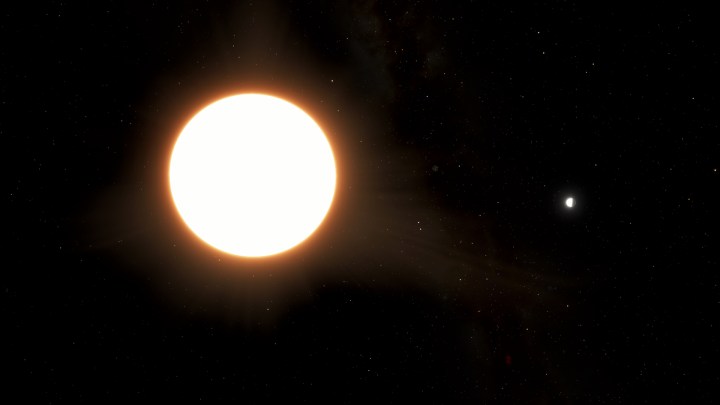When you look up at the night sky you see mostly stars, not planets — and that’s simply because planets are so much smaller and dimmer than stars. But you can see planets in our solar system, like Venus, which is one of the brightest objects in the night sky. Due to its thick, dense atmosphere, Venus reflects 75% of the sun’s light, making it shine brightly. Recently, though, astronomers discovered a planet that reflects even more of its star’s light, making it the shiniest exoplanet ever found.
Exoplanet LTT9779 b reflects 80% of the light from its star, which it orbits very close to. That makes it extremely hot, and researchers believe that the planet is covered in clouds of silicate and liquid metal, which is what makes it so reflective.
“Imagine a burning world, close to its star, with heavy clouds of metals floating aloft, raining down titanium droplets,” said one of the researchers, James Jenkins of Diego Portales University, in a statement.

In fact, the planet is so hot that the presence of clouds at all was somewhat befuddling. The surface temperatures there reach up to 2,000 degrees Celsius, which should be too hot for clouds of water or even metals to form.
“It was really a puzzle, until we realized we should think about this cloud formation in the same way as condensation forming in a bathroom after a hot shower,” explained researcher Vivien Parmentier of the Observatory of Côte d’Azur. “To steam up a bathroom you can either cool the air until water vapor condenses, or you can keep the hot water running until clouds form because the air is so saturated with vapor that it simply can’t hold any more. Similarly, LTT9779 b can form metallic clouds despite being so hot because the atmosphere is oversaturated with silicate and metal vapors.”
The planet is also unusual because of its size and location. At 4.7 times the size of the Earth, it is a type of planet called a hot Neptune which is rarely found orbiting so close to its star. “It’s a planet that shouldn’t exist,” said Vivien. “We expect planets like this to have their atmosphere blown away by their star, leaving behind bare rock.”
The researchers theorize that it could be the metallic clouds that have protected the planet’s atmosphere by reflecting light and stopping it from getting too hot, which prevents the atmosphere from being boiled away.
The research is published in the journal Astronomy & Astrophysics.



